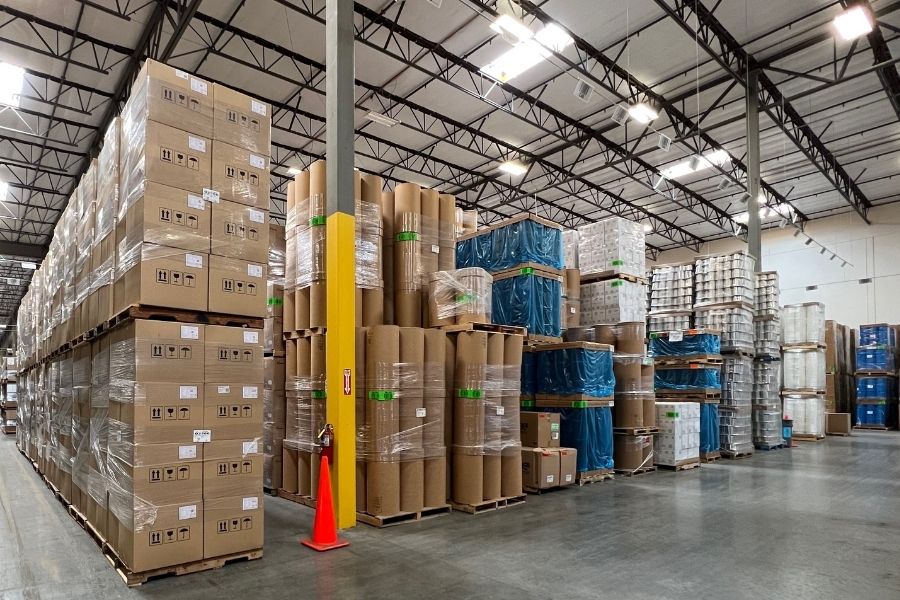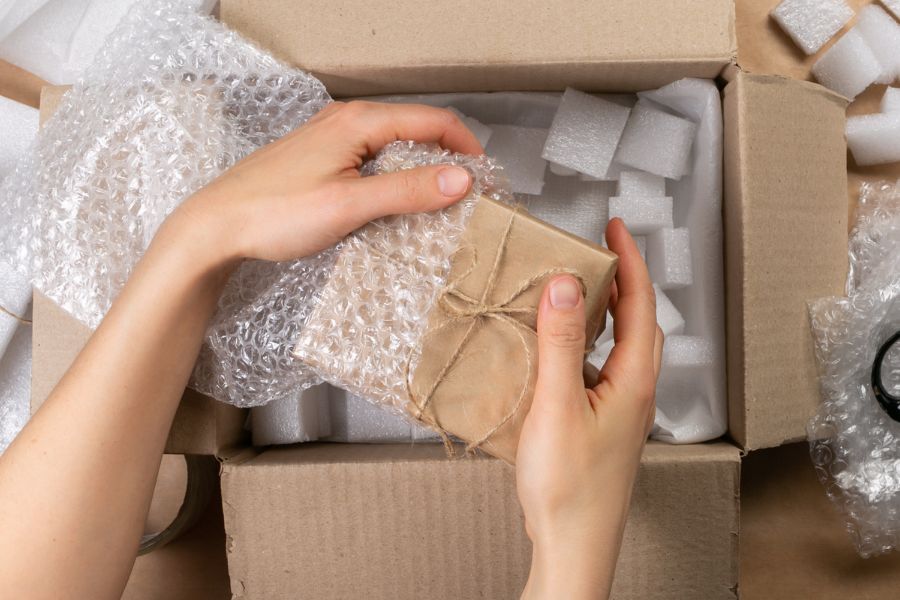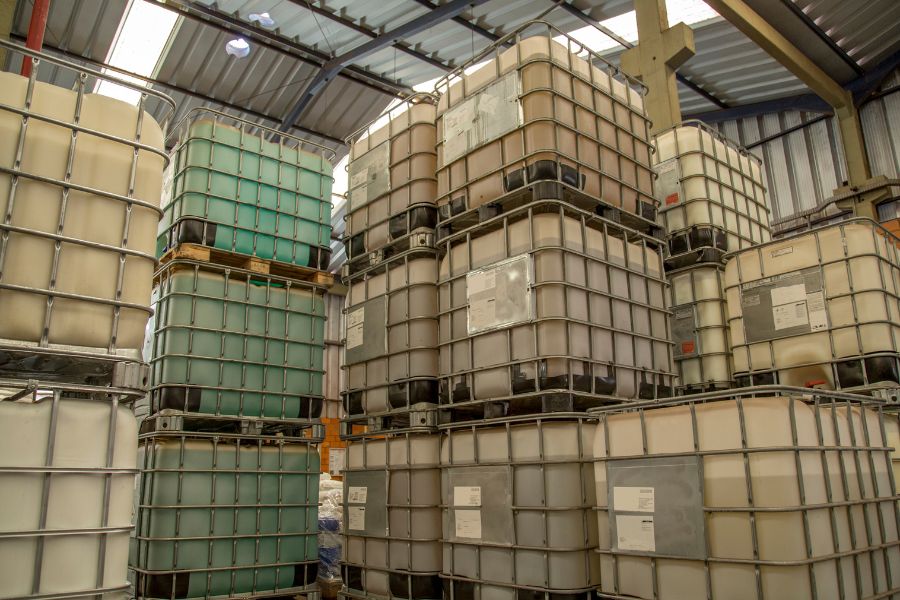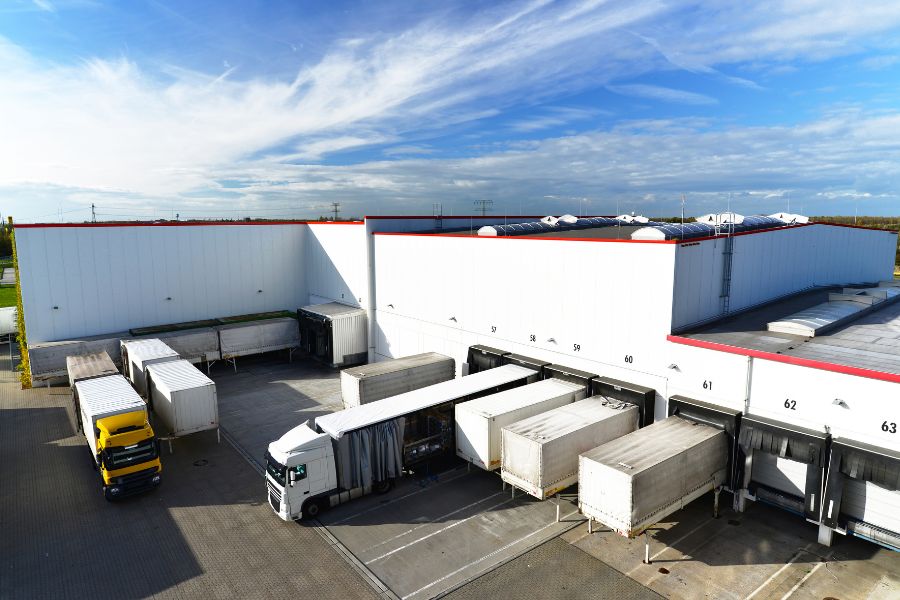KNOWLEDGE
How Optimizing Space Can Be Sustainable
One of the biggest challenges facing retailers and manufacturers today is storage. Whether in-store or in the warehouse, it’s increasingly difficult to manage storage and optimize your available space to easily find products or hold extra inventory. In order to truly be as efficient as possible, it’s crucial to know how to make the most of your storage space.

As sustainability continues to take center stage in consumer and corporate agendas, it’s wise to make sure sustainability and eco-consciousness are top priorities in your company as well. Finding innovative solutions that blend efficiency and sustainability to optimize space is critical for long-term business success. In this article, we’ll explore how space optimization can positively impact your brand as an eco-friendly solution that will enhance the space efficiency of your business.
What is Sustainable Package Design?
Optimizing space is an important aspect of sustainable packaging. By reducing the amount of packaging materials used, companies can minimize waste and conserve resources. This not only benefits the environment but also reduces costs for businesses.
Sustainable packaging design focuses on creating packaging that is both functional and space-efficient. This can be achieved through various methods, such as using lightweight materials, minimizing the number of components, and designing packaging that is easy to stack and store.
In addition to reducing waste, space optimization also has other sustainability benefits. For example, it can reduce transportation costs, as less packaging material means less weight and volume to ship. It can also reduce the need for storage space, which can free up valuable resources for other uses.

Sustainable Packaging’s Environmental Impact
Despite some initial pushback due to the challenges of sustainable packaging, we can see the impact sustainability in packaging has had on the environment. The sad fact is that 40% of the plastic in trash comes from packaging waste.
The adoption of sustainable packaging practices has a significant positive impact on the environment. By reducing the use of single-use plastics, unrecyclable materials, and optimizing space in packaging, companies can considerably lessen their carbon footprint. One of the key strategies in sustainable packaging is space optimization, which involves utilizing packaging materials efficiently without compromising the product’s safety or functionality. This not only minimizes the amount of packaging materials used but also optimizes transportation and storage, reducing greenhouse gas emissions associated with logistics. By adopting sustainable packaging solutions and optimizing space, companies can contribute to overall sustainability while enhancing their brand image and creating a positive impact on the environment.
Overcome Logistic Challenges through Optimized Space
Overcrowded shelves and unpacked boxes taking up space on the floor are, unfortunately, all too common sights in warehouses and storage areas. Overcoming the challenges of limited space and excess inventory by implementing best practices is a real challenge for many manufacturers and retailers. Thankfully, there are some solutions to overcome logistics challenges and space constraints while embracing sustainable packaging solutions.

Addressing Overflowing Warehouses
Warehouses provide a place to store extra products and packaging while you wait to fulfill orders and ship products out. However, space is often limited, and if you have too much inventory, shelves can fill up, making it challenging to know where products are located. That can lead to excess ordering and even less space in your warehouse.
To optimize warehouse operations, it’s necessary to implement a well-structured plan that keeps track of item locations, identifies the most efficient way to access them, and designates overflow storage areas to prevent congestion in the rest of the facility. Effectively managing inventory and proactively addressing overflow situations can lead to space optimization and improved operational efficiency.
Tackling Insufficient Storage Strategies
Another challenge that many businesses face in their warehouse management is their storage strategy. Even if you begin with a plan that designates specific areas for product storage, you can quickly become overwhelmed and lose track of your initial organization in favor of just finding any available space.
A successful storage strategy is the foundation of effective inventory management. It helps determine the specific locations where products should be stored, identifies optimal storage solutions for overflow inventory, and establishes efficient processes for quick access to products. Digital tools can enhance storage strategies, but the key to success lies in adhering to the plan and avoiding deviations.
Removing High Rental Costs
Renting a warehouse can be extremely expensive. Rental costs are continually rising, and that can quickly eat into your bottom line—especially if you are taking up more space than you really need due to excess inventory, oversized packaging, or poor warehouse management.
Reducing storage costs can be done if you manage your space more efficiently and create a strategy that helps you improve your product organization. To effectively manage costs, it is important to ensure that your packaging solutions are space-efficient. Avoid wasting space by utilizing packaging materials that are not unnecessarily large or bulky. This approach can significantly reduce overall space usage, leading to cost optimization.
Optimizing Wasted Space
Waste in your business doesn’t just come from packaging waste. You can also waste space in your warehouse and inventory storage spaces. Making the most of your available space and ensuring that every available inch is used efficiently can help you improve your warehousing strategy and get better results from your inventory management plan.
Think about the type of storage solutions you have in place, like shelving and storage racks. Look to find areas to improve that will allow you to have more options for storing products and excess inventory. And don’t forget to use up space vertically as well as horizontally. If your warehouse has high ceilings, think about how high you can use the space safely and still access your products.

Options for Space-Saving Sustainable Packaging Design
Now that you have some ideas on how you can improve the logistical challenges in your warehouse let’s tackle the best ways to bring sustainability into those practices and combine both efficiency and sustainability in packaging design.
1. Match Box Dimensions to Product Size
When you begin to design packaging for a new product, it is common to add extra space so the packaging doesn’t fit tightly around the product. However, this can lead to excess waste and space that limits your storage options. By sizing your box dimensions to match the product size during the design process, you can optimize space utilization and improve your space-saving efficiency.
2. Modular and Stackable Designs
Another great idea for saving space with sustainable packaging is using modular designs and stackable solutions. These solutions provide as much versatility as possible by creating components that allow for flexibility, eliminating wasted space, and ensuring compatibility with a range of products. You can adapt and edit your packaging for multiple products, different sizes, and unique shipping combinations. By using stackable designs that fit together, you can reduce both wasted storage space and excess packaging waste.
3. Exploring Flat Pack Options
Flat pack boxes are a packaging solution that is designed to be easy to assemble without taking up too much excess space. To optimize storage space, these products arrive flat and can be swiftly assembled on-site. An example of flat pack packaging is cubitainers. This convenient feature allows you or your team to construct the packaging as needed, eliminating the need for excessive warehouse space. Many flat pack boxes are made of recyclable materials, so if disposed of properly for recycling, they won’t end up in landfills.

4. Optimizing Shapes
Customizing your packaging with adaptable or unconventional shapes can minimize wasted space. Tailoring the shape of your packaging to the dimensions of your product can optimize space utilization, and it doesn’t have to be restricted to square or rectangular forms. Unleashing your creativity in packaging design can elevate customers’ interest and perception. Additionally, customizing your packaging allows for innovative solutions, such as reducing the use of plastic and minimizing material consumption in your overall design.
5. Embracing Eco-Friendly Alternatives
Incorporate environmentally friendly materials into your packaging to promote sustainability and reduce single-use plastic and non-recyclable waste. Bio-based alternatives to traditional plastics offer environmental benefits while being customizable to fit your storage needs. Biodegradable packaging and compostable materials provide customers with options once they reach the end of the product’s life cycle. You can even take it a step further with plantable packaging as a new packaging solution. Utilizing post-consumer recycled content instead of virgin plastics in your packaging material contributes to promoting a circular economy through efficient resource utilization and waste reduction. These environmentally friendly solutions and a considerate use of materials will establish your brand as a company taking a holistic approach to creating a better tomorrow.
6. Adopting Minimalist Design
Opting for minimalist packaging aligns with modern design trends while offering practical advantages, such as minimizing waste and enhancing storage efficiency. Eliminating unnecessary elements in packaging design contributes to waste reduction in businesses. For example, using less material and lightweight alternatives embraces minimalism while also reducing fuel consumption and pollution during shipping and delivery. For consumer goods companies and manufacturing brands, sustainable product packaging and minimalist design are intertwined, creating a harmonious approach to environmental responsibility and brand aesthetics.
7. Eliminating Void Spaces
Void spaces are the empty areas around your products and the packaging. Traditionally, these spaces are filled with filler material, which can often be unsustainable and wasteful, such as styrofoam, packing peanuts, or bubble wrap. Eliminating void spaces gets rid of the reliance on these types of materials. Shape nesting is a strategy where the packaging itself hugs the sides of the product, providing protection during shipping and display without any filler material. It can also reduce the size of your packaging, allowing you to store more products in the same space.
8. Incorporating Automated Packaging Systems
Automated packaging systems are digital tools that can help you understand where you can improve your current packaging and warehousing strategy. Automated systems can help you organize and visualize your warehousing space and dive into the metrics of your current packaging options to see where there is room for improvement. Packing algorithms can also give you and your warehouse team a virtual map of where all of your products are located, increasing your warehouse efficiency and inventory management processes while keeping track of your supply chain and raw materials.
9. Leveraging Packaging Analytics and Simulation Tools
Automated packaging systems aren’t the only tools you can use to help improve both sustainability efforts and warehouse management. You can also access detailed analytics to help you understand the details of your space utilization metrics, get a real-time cost-benefit analysis, and track your return on investment for packaging solutions, warehouse rent, and technology costs. Simulation tools can help you visualize what sustainable packaging can look like for your business, as well as help you understand the possibilities for storage spaces and warehouse optimization.

Future Impact of Sustainable Packaging on Businesses
Prioritizing sustainability and recyclability in your packaging is more than just a good idea to improve storage and warehousing issues while reducing your carbon footprint. It’s also important for the future of your business and the long-term success and growth of your company.
Consumers are becoming more environmentally conscious about climate change and sustainable solutions and want to see the businesses they support do the same. Sustainable practices are appearing in more brand identity values and mission statements. Rules and regulations are being implemented to improve environmental impacts in all industries, including manufacturing, retail, and even the packaging industry. By getting ahead of the curve and using sustainable design in your packaging solutions and your product packaging designs, you can provide both customers and your local community with better sustainable options and results. By embracing sustainability, you can lead the way in driving positive environmental outcomes and stay ahead of the competition, all while efficiently utilizing space in your product packaging and storage facilities.
Save Space with Sustainable Packaging Designs Today
If you are interested in improving your packaging design or optimizing your packaging and supply chain solutions, then we are here to help!
At Paramount Global, we are proud to be leaders in innovative packaging design, including sustainable packaging and space-saving efforts. Our custom solutions help businesses of all shapes and sizes find the best solution for their product needs and long-term business goals. Contact us today to discover how we can transform your packaging strategy and optimize your supply chain so you can focus on the things that matter in your business.
Hayley is a marketing professional and copywriter with a background in crafting content for a diverse range of industries. She has been writing about packaging and supply chain logistics for Paramount Global since 2022. She specializes in explaining complex topics in a clear and engaging way and is an advocate for sustainability in packaging and supply chain management.
Read More
For over forty years, Paramount has been delivering perfectly integrated packaging and supply chain solutions.
